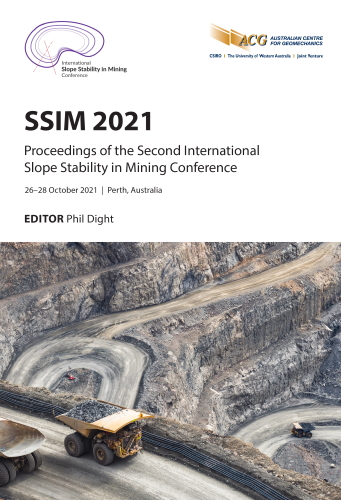Integrated three-dimensional laser scanning implementation for monitoring tailings dams

|
Authors: Monreal, P |
DOI https://doi.org/10.36487/ACG_repo/2135_09
Cite As:
Monreal, P 2021, 'Integrated three-dimensional laser scanning implementation for monitoring tailings dams', in PM Dight (ed.), SSIM 2021: Second International Slope Stability in Mining, Australian Centre for Geomechanics, Perth, pp. 177-184, https://doi.org/10.36487/ACG_repo/2135_09
Abstract:
Tailings dam incidents in recent years have forced the industry to consider the associated risks regarding efficient operational management, alongside the environmental and safety impact that a collapse can trigger. Waste management, either through deposit and/or tailings dam rehabilitation, is one of the final production stages in the mining execution chain. Notwithstanding its priority in the cycle, waste management deserves attention since it often impacts human settlements, where communities are increasingly concerned about the measures and governance surrounding mining projects. The impact of tailings dam failures has ramifications at any stage of a mining operation, including after remediation has been carried out. This makes it an absolute necessity to establish strict monitoring and control of the dam walls and fault alarming. This paper will present how an integrated system, implemented through the application of threedimensional (3D) laser scanners and dedicated software, can deliver improved safety outcomes both in controlling the monitoring of the stability of tailings dams and in their operational management. The 3D laser scanning approach provides a decision support system that aids professionals to manage geotechnical risk and monitor in real time, as well as report movements caused by slope instability that could interrupt mining activity and cause material and human losses. An integrated hardware–software system can capture and report on data critical to slope stability monitoring. Informing operations about millimetric deformations from baseline measurements at critical points of the dam wall allows geotechnical engineers and management to perform back-analysis and receive predefined alerts instantaneously. Operations can also monitor the changes in surfaces as remedial work is carried out, providing a risk management tool that ensures safety of equipment and personnel.
Keywords: tailings, laser scanning, safety, monitoring
References:
Abramson, LW, Lee, TS, Sharma, S & Boyce, GE 1999, Slope Stability and Stabilization Methods, Wiley & Sons, New York.
Maptek 2021, Sentry, computer software, https://www.maptek.com/products/sentry/index.html
Oliva Gonzalez, AO 2015, Instrumentación y Control de Taludes y Laderas (Instrumentation and Control of Slopes and Hillsides), technical report, Grupo Iteico Euroamericano.
Sernageomin 2018, Guía Metodológica para Evaluación de la Estabilidad Física de Instalaciones Mineras Remanetes (Methodological Guide for the Evaluation of the Physical Stability of Remanetes Mining Facilities), Valparaíso,
© Copyright 2026, Australian Centre for Geomechanics (ACG), The University of Western Australia. All rights reserved.
View copyright/legal information
Please direct any queries or error reports to repository-acg@uwa.edu.au
View copyright/legal information
Please direct any queries or error reports to repository-acg@uwa.edu.au